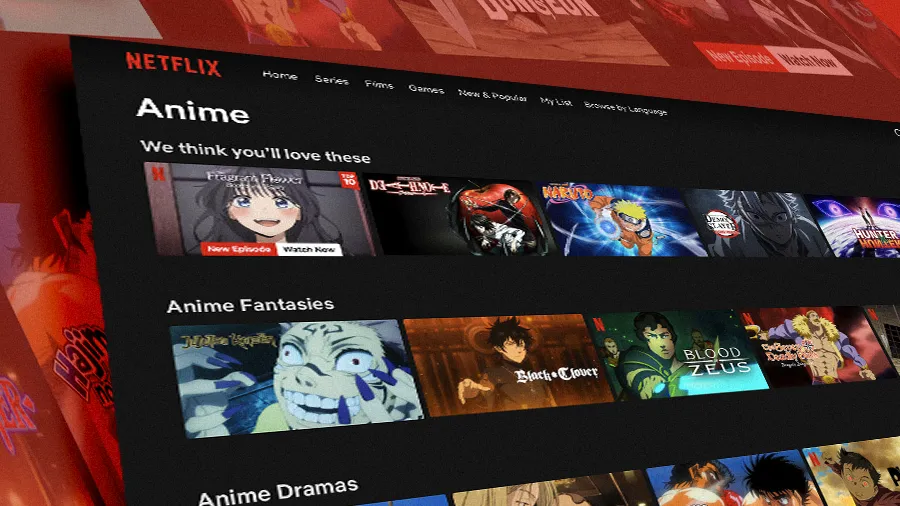


Streaming platforms, led by Netflix, have transformed anime from a niche subculture into a central pillar of the global streaming wars.
Carlos Civicos Zarzoso, former SELECTAVISION VOD Manager, explains how this rapid ascent has ignited a culture war over the soul of the art form.
Zarzoso details the central conflict: longtime fans decried the "Netflixification" of beloved titles, while others celebrated anime's newfound global accessibility and economic power.
The streaming revolution also creates new problems, including intense competition for exclusives and audience fatigue from a fragmented market.
For decades, anime was a global phenomenon hiding in plain sight. It was a subculture powered by a fiercely dedicated fanbase but dismissed as niche by the mainstream, its growth stalled not by interest but by a slow, fragmented distribution model that kept audiences waiting. Then came the streamers.
A new wave of global platforms have taken anime from a siloed art form to a central pillar of the streaming wars. The genre's rapid ascent, underscored by Netflix’s ever-expanding anime slate, has not only reshaped the industry’s economics but has also ignited a fierce debate about its soul.
We spoke with Carlos Civicos Zarzoso, Anti-Piracy & Content Protection Manager at digital risk protection platform Red Points, to understand the transformation. With a career spanning over 16 years in the industry, including a long tenure as VOD Manager at the major European anime distributor SELECTAVISION, Zarzoso was on the front lines, selling content directly to Netflix as it began its conquest.
Zarzoso’s analysis of Netflix's impact is a study in contrasts, capturing a fundamental conflict between artistic purity and global reach. He argued that both sides of the debate have a point.
The "Netflixification" of anime: "If we asked anime fans aged 35–50, some would say that Netflix has changed some anime titles too much—a 'Netflixification'—and they miss the artistic value and manual work of traditional Japanese studios. Others would say that thanks to Netflix and other platforms, anime is no longer niche; it's global, not just in the content itself but the culture around it. Both would be right."
To understand the dual reality, you have to rewind to the era of physical media. Zarzoso explained that the "niche" label was always a misnomer, a problem of perception and logistics rather than popularity. The old distribution model was the true bottleneck.
A niche in perception only: "For many years, Anime and Manga content has been considered a niche market, even though it had strong sales and big events in countries like Italy, Spain, and France, with hundreds of thousands of people attending. Physical formats had a long and successful life in this industry."
The 12-month lag: "The distribution strategy from Japan was to look for local partners in each country. These partners were experts and knew how to manage the content, including translation, dubbing, packaging, design, and collector's editions. Time was an important factor; sometimes more than 12 months passed before the content released in Japan arrived in Europe."
The delay was frustrating, and it created the perfect opening for disruption. Streaming platforms didn't just offer a new way to watch; they offered a new model of distribution built on speed and global access, fundamentally altering the landscape.
The simulcast solution: "Platforms like Netflix and Crunchyroll have changed this model," Zarzoso stated. "Now, anime premieres are simulcast simultaneously in more than 30 languages. The barrier of waiting months is gone. This creates exponential growth."
A three-phase takeover: Zarzoso detailed Netflix's methodical, three-step strategy. First, it worked within the old system, buying from "local companies" and had "big success with views and popularity thanks to strong anime franchises." Next, it bypassed them entirely to "start acquiring global rights directly from Japan." Finally, Netflix "created its own original anime, which attracted fans and also created new ones."
But this solution has created its own set of problems. The streaming revolution has led to an arms race for exclusive content, creating a fragmented and expensive market for consumers. That has created intense pressure for specialized platforms like Crunchyroll, which, despite its own impressive growth, now finds itself in a war for exclusives against giants with much deeper pockets.
The churn fatigue: "Another important factor today is exclusivity," Zarzoso said, "where a title is available only on one platform for a period of time. But with so many platforms and users' limited budgets, audience fragmentation creates fatigue and even churn. That's why the market is exploring new flexible licenses, where content can be available on more than one platform, and not all of them need to be paid platforms."
The debate over artistic purity and global reach underscores a new reality for the industry as anime has been permanently elevated from a subculture to a global economic force. "Anime is now a very important force in the streaming economy," Zarzoso concluded. "It creates new opportunities for other players in the industry, and also a challenge for the leading platforms in the anime SVOD market to keep their audience and give them the content they love."